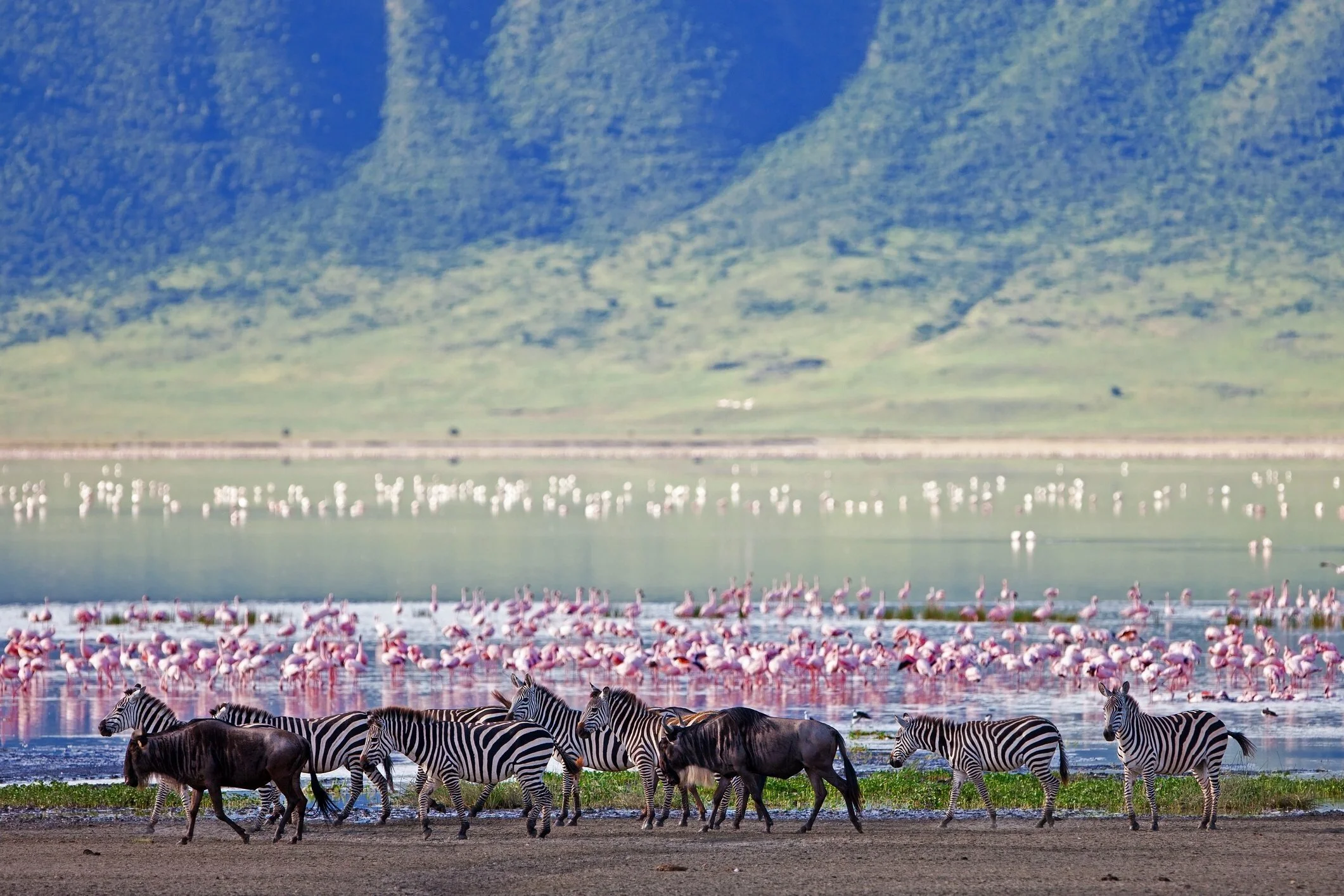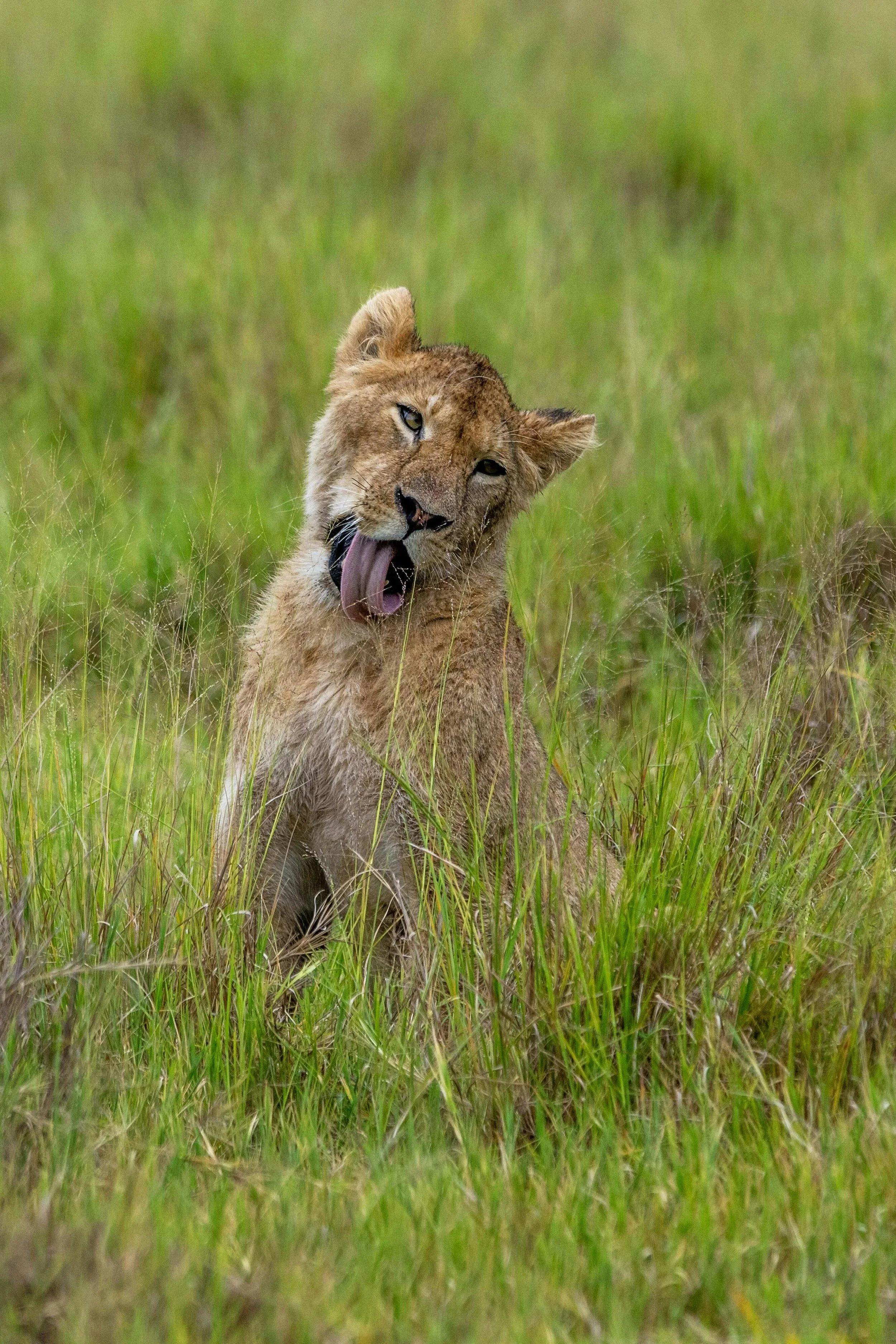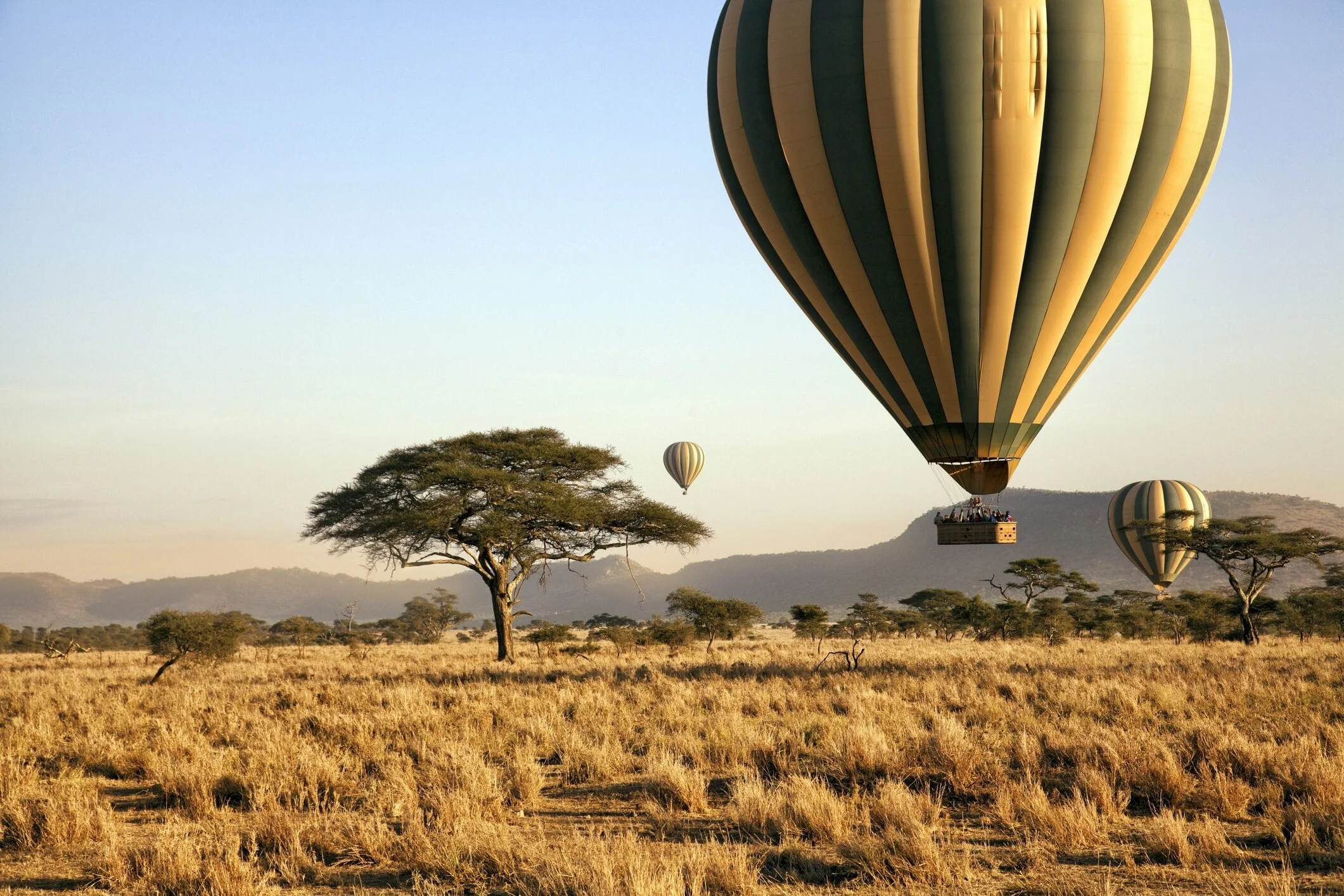HOW TO SURVIVE THE RAINY SEASON IN TANZANIA
A lioness takes shelter from the rain in the branches of a tree, looking out into the distance / Image: sam-power
Tanzania's rainy season; it’s the time of year that most tourists shy away from. But unless you have the option to visit in the dry season, you’re likely to find yourself here during this period, and there are many highlights to enjoy.
Due to its tropical climate, Tanzania sees around six dry months of the year with minimal rainfall, while regular downpours characterize the other six. However, that's not to say that you won't witness any showers through the drier months or that every day will bring persistent rain when the wet season rolls around.
Nonetheless, if you come to Tanzania when the wet season is in full swing, you may need to make some extra considerations ahead of your trip. This can include everything from deciding what to wear to taking specific safety precautions.
All of this might seem a tad overwhelming, but don’t worry; it’s simple and easy to navigate. Here’s how you can survive the rainy season in Tanzania and still have an unforgettable time.
Magical 1-Day Ngorongoro Crater Tour
Experience a spectacular taste of Tanzania in our unforgettable 1-Day safari experience within the breath-taking Ngorongoro Crater
A young lion sits in the vibrant green grass during the rains and grooms himself / Image: felix-rottmann
When Is the Rainy Season in Tanzania?
If you've visited tropical destinations in the past, you'll likely be familiar with how the dry and rainy seasons work. In many instances, these types of countries get approximately six months of relatively consistent dry spells, followed by another six months of rather frequent rainfall. In Tanzania, though, things aren't so straightforward. They have a dry season, which is often considered the best time of year to visit for a safari. But on top of that, there are two distinct wet seasons in Tanzania, which are broken up by two dry periods.
The primary rainy season, known as the 'long rains' or 'masika' in Swahili, runs from March to May, bringing heavy regular rainfall that typically arrives most afternoons. Throughout these months, various regions in the country are at their most humid, and on some days, temperatures can reach around 90°F (32°C).
'Vuli' or the 'short rains' affect Tanzania from late October to the end of December. Unlike the long rains, the showers during this time of year tend to be lighter and more sporadic. Temperatures are comfortable and range from approximately 65°F (18°C) to 82°F (28°C), while humidity remains quite high.
It's worth keeping in mind that the rainy season months can vary slightly depending on what part of the country you're referring to. Many of the busy safari zones, for example, experience the same dry and wet seasons, such as those along the northern circuit, but those in southern and western Tanzania can be a little different.
Is the Rainy Season Really That Bad?
The extent to which the conditions through the wetter part of the year in Tanzania can impact your trip will depend on the specific timing of your visit. If you come when the short rains have arrived, you likely won't have to worry too much about the weather affecting your plans, but this isn't necessarily the case when the long rains arrive.
When the rain is at its heaviest, roads can become extremely muddy and impassable. This means that some activities, such as game drives or other outdoor experiences, may not be possible or canceled at short notice. Road closures can also limit your accommodation options, with some hotels and lodges being too difficult to reach during periods of persistent rainfall. Furthermore, safety can be a concern, making it an unfavorable and sometimes dangerous time for treks to peaks like Mount Kilimanjaro and Mount Meru.
While it's essential to plan your trip with these potential challenges in mind, there's no need to write off a visit to Tanzania during the wet season entirely. In fact, there can be some advantages to traveling here outside of the busier dry seasons, so long as you're prepared to keep your itinerary somewhat flexible.
Among the biggest perks is the minimal crowding you can expect in areas that are often incredibly busy in the dry season, such as the Ngorongoro Conservation Area, Serengeti National Park, and Zanzibar. Not only will these destinations be quieter, but they'll generally be more affordable than usual. Better still, heavy rain often results in lush, green landscapes that are far more vibrant than those you'll typically see in the dry months.
Storms are brewing up ahead. A glance of the vast plains of the Serengeti with dark clouds above indicating the rains are about to start / Image: polina-koroleva
What Should You Pack for the Rainy Season?
Trips across the rainy season months often require a slightly different packing list than what you might expect for other times of the year.
As well as your everyday clothing and shoes, you'll need to stock up on waterproof items for your comfort and protection. If you're coming here during the short rains, water-resistant gear might suffice, but for heavy rain, it's best to stick to waterproof alternatives, as these can withstand wetter conditions.
Waterproof jackets and shoes are musts, along with umbrellas, particularly if you're planning to spend extended periods outdoors. Another essential is a waterproof bag, which will keep your valuables and any electronic equipment safe even if you get caught in a sudden downpour.
Some of the best things to pack for the wet season in Tanzania are fast-drying clothes, meaning it's a good idea to leave items made from cotton, linen, or other slow-drying fabrics at home. Instead, opt for pieces made from synthetic fibers like polyester or nylon, which work to repel water while also being lightweight and breathable.
In addition to the items mentioned above, be sure to add sunscreen to your packing list, as, even in rainy conditions, the UV rays in Tanzania can be extremely high. It's also worth noting that mosquitos are most active when the weather is warm and humid, so bringing ample repellant and protective nets is imperative to avoid irritating and potentially harmful bites.
Rainy Season Safety: What You Should Know
If you're in the midst of organizing a holiday to Tanzania in the rainy season, you'll need to take some safety considerations into account. Unfortunately, there can be more risks associated with traveling here during this time of year beyond interruptions to your itinerary and getting stuck in showers from time to time.
As previously mentioned, when the rainy season arrives, so too do large numbers of mosquitos. These creatures thrive when humidity is high, and the abundance of bodies of stagnant water is ideal breeding conditions. Mosquitos can carry all kinds of diseases, the most notable of which is malaria. Before you set off for Tanzania, we recommend discussing your travel plans with your doctor, who will likely be able to provide you with a prescription for antimalarial medication. Combining these tablets with mosquito nets and strong repellent will give you the best protection from these bites.
Another unwelcome side effect of heavy rainfall is the increased pressure on sanitation systems. This can lead to an increase in the prevalence of water-borne diseases, such as typhoid and cholera, especially in areas frequently hit by floods. Contaminated water can also cause a string of gastrointestinal issues, including diarrhea and stomach aches. While it's advisable to stick to purified or bottled water no matter when you visit, it's more important than ever to be vigilant in the wetter months.
Contaminated water can also come into contact with food. For this reason, it's best to avoid any raw foods and ensure everything is piping hot and thoroughly cooked before eating. Other ways to stay safe include only eating fruits that must be peeled, such as oranges and bananas, and washing your hands carefully before handling any food.
A safari vehicle drives along a dirt track during the rainy season, with dark clouds above / Image: giusi-borrasi
Tips for Navigating the Rainy Season
Below, you'll find all of our top tips to prepare you for the rainy season in Tanzania, which are sure to make your trip as smooth and stress-free as possible!
Download reliable weather apps, such as Windy and AccuWeather, ahead of time to help you plan accordingly. Although no app can be completely accurate, these can give you a rough idea of what weather to expect each day.
Choose your accommodation cautiously and opt for those that are well-connected to paved roads rather than those located along dirt tracks prone to flooding. It's also safer to book one of the luxury hotels or lodges rather than tented camps, though you'll find that many such campsites close for the rainy season.
Even if you're heading to an area that doesn't require you to be accompanied by a guide, it's worth hiring a driver who has experience operating 4X4 vehicles and traversing muddy, uneven roads.
If your schedule allows it, plan your visit for one of the shoulder seasons, which make up the beginning and end of the rainy periods. That way, you'll have a better chance of steering clear of the worst of the heavy rains while still making the most of the reduced crowds, lower prices, and vivid landscapes.
Tackle the Rainy Season in Tanzania With Confidence!
With a little extra preparation, you can cut out a lot of the stress and uncertainty that comes with visiting Tanzania throughout the wetter months of the year.
Although the rainy season in Tanzania can bring some challenges your way, it can also be some of the most beautiful months to visit. This guide will make sure you're well-equipped for any obstacles that comes your way.
Join us on our incredible 4-day Serengeti Adventure
Our 4-Day Serengeti Safari offers a jam-packed, unforgettable mini adventure, featuring a variety of incredible highlights along the way.
Explore the mesmerising central and northern regions of the Serengeti, where we will experience its vast stunning landscapes as well as its spectacular wild species. Watch the awe-inspiring spectacle of the Great Migration, the marvelous calving season, journey through its diverse natural wilderness and immerse yourself in Africa’s most famous national park, experiencing the Serengeti to its fullest.







